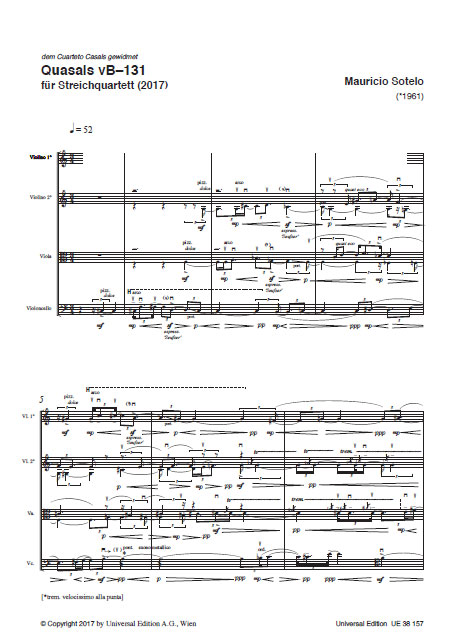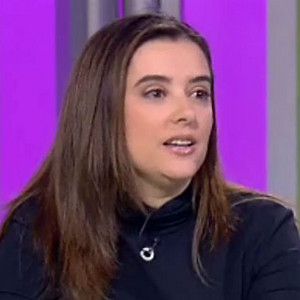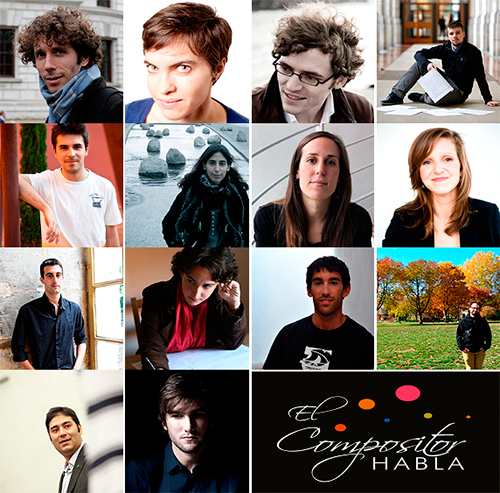Artistas
Mauricio Sotelo (Compositor)
Mauricio Sotelo | Mauricio Sotelo | Project Mauricio Sotelo 4. Interview with Casals Quartet
24/01/2018Premiere of "Quasals vB-131" by Mauricio Sotelo at the Philharmonie in Berlin. Interview.
Interview. Next Thursday, January 25, 2018 at 20.00 hours at the Philharmonie, Kammermusiksaal in Berlin, will be the premiere of the piece 'Quasals vB-131' by Mauricio Sotelo performed by Casals Quartet, as part of 20th Anniversary Season.
We have spoken with them and this is what they have told us.
Interview. Next Thursday, January 25, 2018 at 20.00 hours at the Philharmonie, Kammermusiksaal in Berlin, will be the premiere of the piece 'Quasals vB-131' by Mauricio Sotelo performed by Casals Quartet, as part of 20th Anniversary Season.
We have spoken with them and this is what they have told us.
.jpg) 1. Ruth Prieto: When did you meet Mauricio Sotelo for the first time? How was that first encounter?
1. Ruth Prieto: When did you meet Mauricio Sotelo for the first time? How was that first encounter?Casals Quartet: We met him at the Wissenschaftskolleg in Berlin and, as tends to happen when Spanish musicians meet up abroad, we hit it off straight away. We talked about the music of Schubert and Beethoven and about the possibility of performing one of Sotelo’s works at some point in the future.
2. R.P.: Do you remember the first time you heard music by Sotelo? Which work was it? What type of impression did it make on you?
Casals Quartet: The impression of a composer who had found a voice of his own, a composer whose music had perspective, something to say, a rigorous compositional process behind and immediate communication to the listener, the sort of things which characterize the work of a string quartet.
3. R.P.: The latest work by Sotelo performed by the group is String Quartet No 4 Quasals vB-131 premiered last October in London. What can you tell us about this piece?
Casals Quartet: Quasals vB-131 is a fascinating combination of an in-depth analysis of Beethoven’s string quartet No 14 (Opus 131) and the rhythms, sounds and harmonies that form the basis of flamenco.
4. R.P.: What is Sotelo’s music like? How would you define his musical universe?
Casals Quartet: The raw material for his music is the world of flamenco but what is fascinating is how he links flamenco material to classical music techniques such as counterpoint, playing with motifs, using motifs to build harmonies, etc.
.jpg) 5. R.P.: When we talk about contemporary music, we tend to put under the same umbrella very different aesthetic concepts. What are the signs of identity of Sotelo’s music?
5. R.P.: When we talk about contemporary music, we tend to put under the same umbrella very different aesthetic concepts. What are the signs of identity of Sotelo’s music?Casals Quartet: The hallmarks of Sotelo’s music are emotion and direct communication with the listener, underpinned by a structure that keeps the musical tension going from start to finish.
6. R.P.: You have premiered many works by present-day composers. What does Mauricio Sotelo bring to the contemporary music scene?
Casals Quartet: Sotelo’s music bridges the dichotomy between the academic and the popular: it is intuitive, emotional and direct but, at the same time, very well thought-out and organised.
7. R.P.: What is important to take into consideration when you perform Sotelo’s music?
Casals Quartet: You need to follow his instructions but not in a mechanical or slavish way. Rather, you need to understand how the voices relate to one another and what they represent in terms of gesture and emotion.
8. R.P.: ¿De qué manera Sotelo es contemporáneo?
Casals Quartet: Before Bartók, there was no association between folk music and compositional rigour. Sotelo follows in the steps of Bartók but with an even wider range of techniques drawing on instruments, spectral harmonies and complex rhythms.
9. R.P.: Is there any Sotelo work in particular to which you feel particularly attached?
Casals Quartet: El público, his opera based on the play of the same name by the Spanish poet Federico Garcia Lorca.

10. R.P.: What part of tradition and of avant-garde can we find in Sotelo’s music?
Casals Quartet: What we see in Sotelo’s music is Western tradition in terms of harmony, counterpoint, metrics, motifs, etc but with everything presented in an avant-garde world of sound.
11. R.P.: Mauricio Sotelo likes to work closely with the performers of his works. How does that function in practice?
Casals Quartet: Working with Mauricio was a pleasure, in particular because of his clarity of vision and demanding approach. All he had to do was to hum the melodies, do the gestures and explain the key concepts and we understood what he wanted us to do.
12. R.P.: In what new project by Sotelo would you like to participate?
Casals Quartet: Right now we are devoting all our energies to the Beethoven and to the six works commissioned to accompany that but a concerto for string quartet by Sotelo would be fascinating.
About Quasals vB–131
Mauricio Sotelo: Quasals vB–131
Year of composition: 2017
Scored for: for string quartet
Composer: Mauricio Sotelo
Instrumentation details: 1st violin, 2nd violin, viola, violoncello
Commission: "Encàrrec de L'Auditori de Barcelona"
Dedication: dem Cuarteto Casals gewidmet / para Vera, Abel, Jonathan y Arnau, con mi amistad y admiración
"Quasals vB–131 (2017, world première)
One particularly notable element of Beethoven’s Op. 131, the most organic of his late string quartets, is the clear sense of purpose behind its formal structure. The choice of key signature for each of its seven movements reveals the coherent overall design of a work
in which a process of self-reflection is evident throughout. An especially striking feature is the use of the Neapolitan note (D natural) in the fugal answer of the opening movement – the Neapolitan key area then plays a significant role in the quartet’s structure as a whole, with the second movement cast in D major. It is this element of Beethoven’s formal strategy that I took as the basis for my own work and which governs its harmonic (and rhythmic) development. I also transform the material using what we might call a more Mediterranean palette, of almost flamenco-style iridescence and luminosity. In technical
terms, we begin with a six-part canon, then hear spectral harmonies derived from the addition of the frequencies of the Beethovenian Gestalt, via an intricate network of spiralling lines. All the material, including the rhythm, stems from processes derived from the Beethoven source, but in what we might call a compressed form.
The title of my work is a combination of ‘quasar’ (quasi-stellar object: an active galactic nucleus of very high luminosity) and ‘Casals’. The system of naming and numbering quasars inspired me to use my own ‘source of light’ (Ludwig van Beethoven’s
Op. 131) as a kind of catalogue number, hence the slightly tongue-in-cheek ‘Quasals vB–131’. It is, of course, dedicated with my deepest admiration to the extraordinary Cuarteto Casals in celebration of its twentieth anniversary."
(Wigmore Hall London. Sophie Donat)
The photo of the quartet is from Igorcat and that of Mauricio is from Begoña Rivas courtesy of the composer.
More information about the Quartet on its website Cuarteto Casals
More information about the composer on his personal website Mauricio Sotelo
More information about the composer in his editorial Universal Edition
More information about the composer in his profile on our websiteECH-Mauricio Sotelo
Destacamos ...
Nueva Sección Directorio
dedicada a la promoción de compositores, intérpretes, instituciones y editoriales.

dedicada a la promoción de compositores, intérpretes, instituciones y editoriales.



